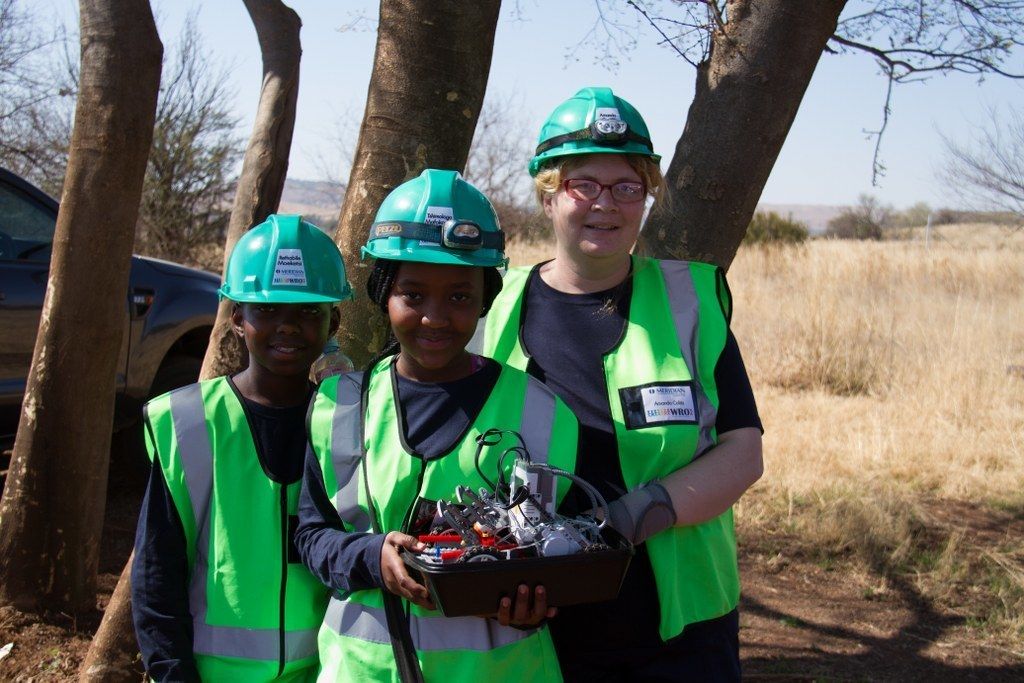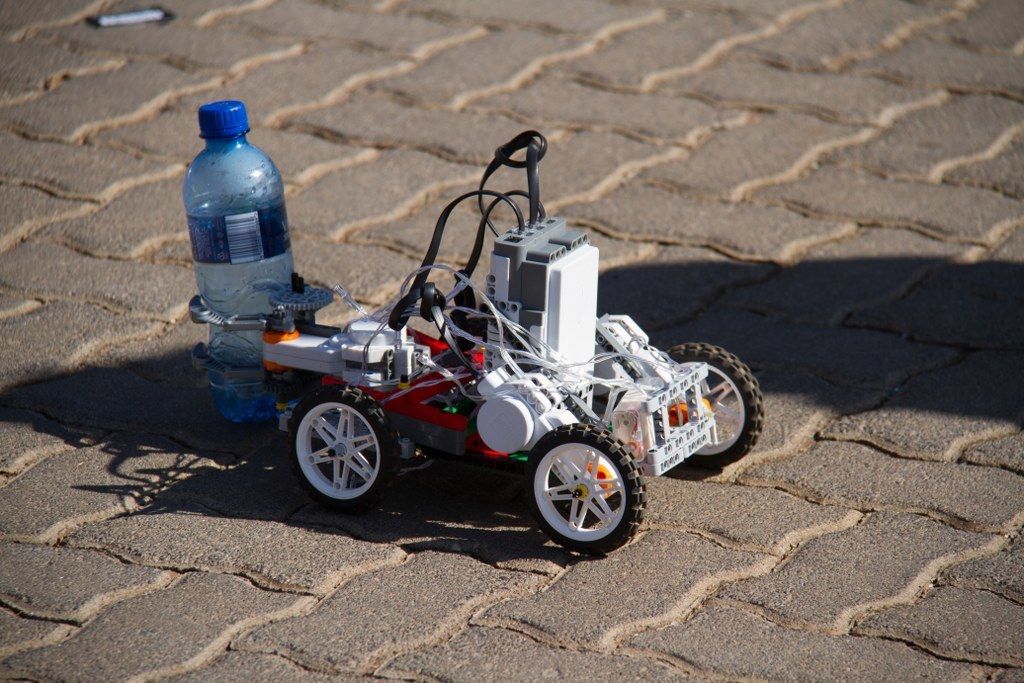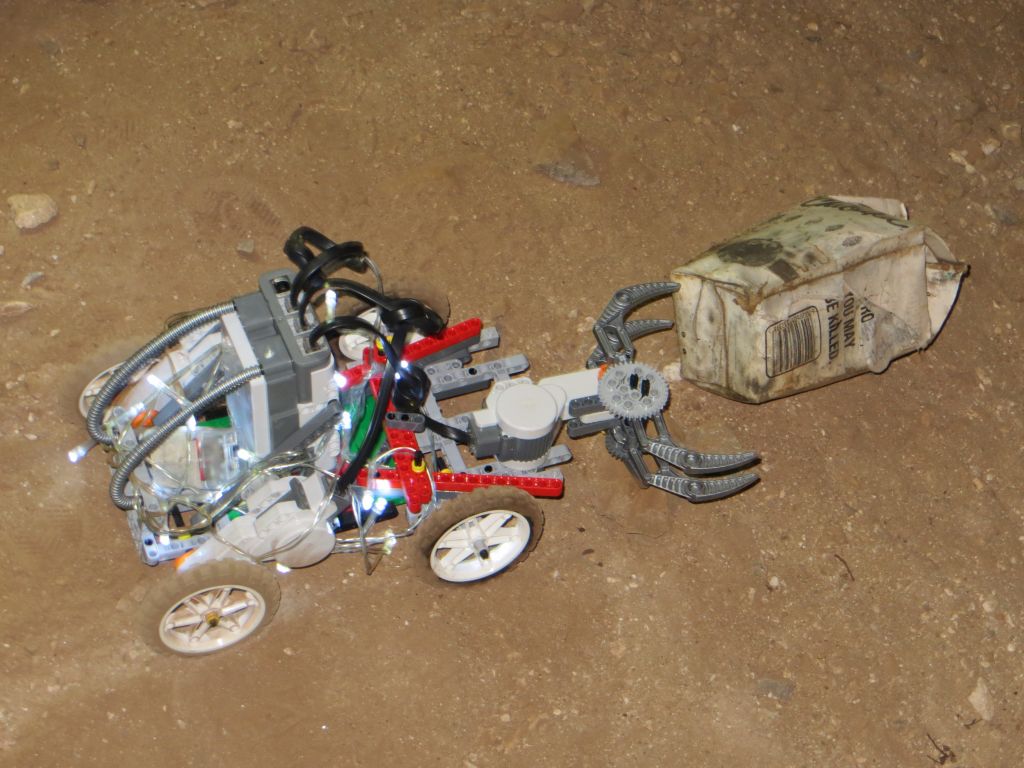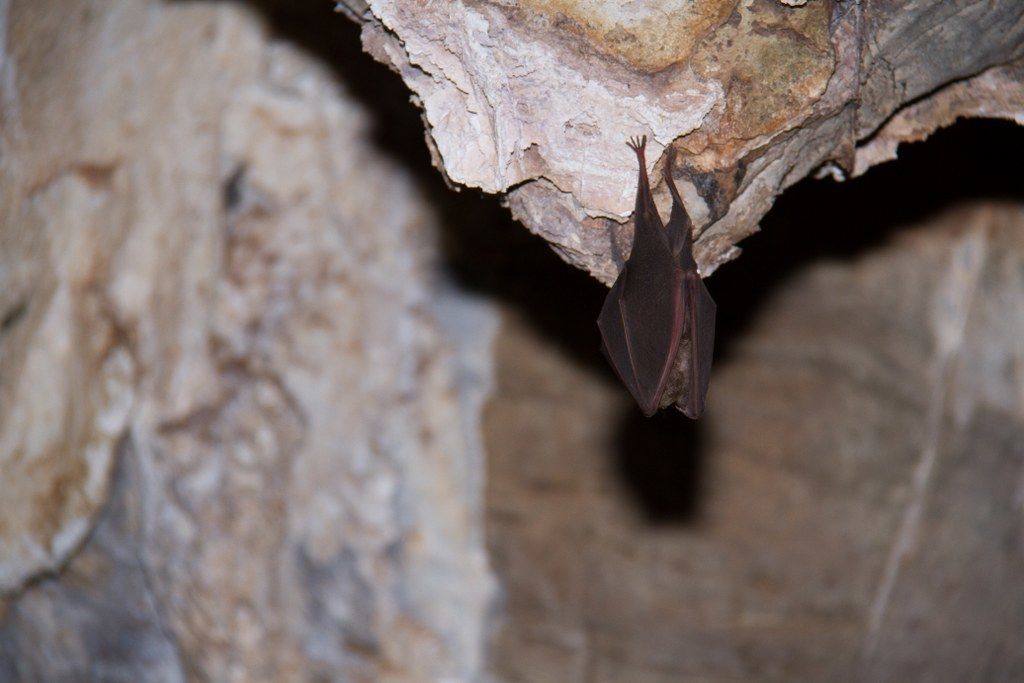Sterkfontein Caves inspire young learners to new scientific heights
Earlier this year, the Sterkfontein Caves welcomed learners from Meridian Cosmo City primary school. The tour was much like the many other school tours that Maropeng and the Sterkfontein Caves conduct on an annual basis, where we welcome young and inquisitive minds and teach them about this place we all call home. Little did we realise, however, that on this particular tour there were award-winning scientists in our midst.
On 10 September, two Grade 6 learners from Meridian Cosmo City, Tshimologo Mafokosho and Rethabile Moeketsi, won a silver medal in the World Robot Olympiad (WRO) national competition, held at Tshwane University of Technology in Pretoria. They were recognised for their cave-cleaning robot, a robot that they created after visiting the Sterkfontein Caves.

The robot, called Mrs Kling, is a Lego Mindstorms robot that uses an NXT brick (the robot’s “brain”) and an EV3 processor, and is remote controlled. The idea to make it a cave-cleaning robot was in line with the WRO theme this year – reycling – and a result of the fact that litter is an unfortunate byproduct of the amount of foot traffic that the Sterkfontein Caves see each year.
“We built the robot to clean out foreign objects in the caves because it [the litter] can create an acid that dissolves the cave formation. Caves are also a natural biome, with many insects, bats, porcupines and worms living in them,” Tshimologo said.


The robot is capable of picking up bottles and cans and can easily navigate the terrain at Sterkfontein. In the Rising Star Cave, where Homo naledi was famously discovered, it initially struggled in the sand, but after a few on-site adjustments, it moved well. The learners gained access to Rising Star through Steven Tucker, Wits University professional caver and one of the discoverers of Homo naledi, who was impressed with the value of the learners' project.
“We wanted to take the learners to a famous site as their project creates excitement around science. It motivates them. People don’t understand the importance of caves; they often throw a lot of rubbish in there which may cover fossils. Or, sometimes the rubbish may even be acidic and damage the fossils … it frustrates further discovery. It would be great if there could be a system to clean the caves,” Tucker said.
Earnest Seamark, a conservationist with a special interest in bat research, joined the team when they went to Rising Star. He used an ultrasound device to assess whether the robot’s frequency would disrupt bats at all, but as Mrs Kling went about her tasks picking up the litter in the cave, a bat slept peacefully throughout the duration of the clean-up – another feather in the team’s cap!

This project, said Amanda Calitz, intermediate phase head at Meridian Cosmo City and the learners' mentor, “was very important for the learners because they broadened their horizons and gained a lot of new experiences. For the school, it was a real motivator for other kids, because if this can be achieved in Grade 6, how far can they go later on in life?”
The school also has a Lego League team, which is building a robotic bat. Keep your eyes open for this group of young science enthusiasts – they’re going places.